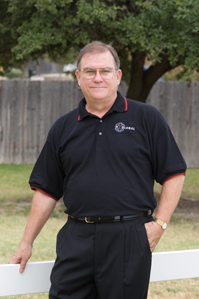ONLINE EXCLUSIVE: Team Diversity: Unleash the Power in Your Organization
Douglas F. Carlberg
 Diversity is a core value at M2 Global, enabling our teams to “run with it” as they achieve high-performance results. It is an essential factor for a winning team, empowering them to unleash their talents.
Diversity is a core value at M2 Global, enabling our teams to “run with it” as they achieve high-performance results. It is an essential factor for a winning team, empowering them to unleash their talents.
Most people innately have a desire to be great — to stretch their boundaries and perform at the highest possible levels. Unleashing that potential requires trust. That means keeping promises and saying, “We believe in you,” even when teams occasionally fail.
In our ongoing employee education, we frequently play a game called “Win As Much As You Can.” Teams initially compete against each other, aiming to win the most money. Eventually someone discovers that if all of the teams cooperate rather than compete against each other, they all can win more money than even the most successful single team. The game is an eye-opener.
About 90 percent of the time, we find that teams coached in working together for a solution — with multiple ideas and perspectives — come up with a winning solution. They demonstrate more mutual respect and unity and less of an “us and them” attitude.
In the past few years, we trained all San Antonio employees in team building and diversity. We also conduct diversity training for all new employees.
Appreciating Our Differences
Diversity encompasses much more than race, sex, and other commonly discussed elements. Education, job experience, behavioral traits, and other differences all play a part. Each of us has personality traits that affect the way we think, handle information, make decisions, and work with others. Using Myers-Briggs Type Indicatorâ diagnostics to examine and understand individual behavior, for example, we’ve learned that some people like to think aloud, while others don’t speak as often. Some people make quick decisions and others want to consider the alternatives. Myriad traits among individuals work synergistically to create an extremely powerful resource. The person sitting next to you is likely to have a different perspective from you, and that’s a good thing. They see and understand what you do not, and vice-versa.
When our teams first started hiring new members, most of the time they hired someone similar to themselves, replicating their shortcomings and strengths. Now our teams look for diversity. Each team identifies and posts its mission, suppliers, customers, products, and key metrics. They also post recognitions received by the team and its members, as well as behavioral information identified through Myers-Briggs about the individual team members. In every conference room, we display a reminder that people have different traits — a good way to keep diversity fresh in people’s minds.
Customer Focus
Understanding how others like to communicate, their sense of urgency about making decisions, and how they prefer to receive information builds strength in interpersonal relations. This understanding gives us valuable insight when we are dealing with customers inside and outside the organization. In addition to team-based management, we use Quality Function Deployment (QFD) with customers. The QFD process helps mitigate the “us and them” perception by promoting cooperation rather than adversarial relationships, a powerful way to increase our sales.
One example of teamwork using QFD involved our request for quotation (RFQ) process. Through a QFD project, we learned that customers were unhappy with this process. To address the issue, a team of sales, marketing, and engineering personnel performed a Kaizen Blitz (improvement project) and developed a way to reduce a five- to 10-day RFQ to an average of 24-48 hours. They decreased the number of required signatures and changed a series of steps to a process of parallel reviews. The diverse perspectives of our team members helped make this QFD project a success.
Trust and Empowerment
Reflecting trust in our employees is another way of bringing out their best ideas and efforts. Several years ago, when morale was low and we faced a difficult challenge turning around the operation and building profits, there was relatively little capital to invest in the plant. I used a significant portion of the capital available after a major reorganization to remodel the break room and several restrooms. This investment demonstrated that we care about employees and plan to stay in San Antonio.
We no longer find it necessary to have a suggestion program. Our empowered teams, through our goal-deployment process, identify needed changes and accomplish them. They do not ask permission; they simply report the changes and their results. In effect, our team members are practicing a discipline called management.
The lessons we’ve learned from these experiences include:
- Once we started training people on teaming and diversity, we needed to distribute decision-making and allow employees to be more self-directing. We also provided them the tools and information they needed to make decisions.
- Sometimes we have taken steps backward, and then learned what to do differently the next time.
- Team diagnostics are essential. Conflict occurs, and we must deal with it.
Throughout all of these efforts, we continued to learn from each other. Team diversity and maturity are part of a process that never stops. There always are new people coming in and new challenges to be met.
Douglas F. Carlberg is president of M2 Global Technology Ltd., San Antonio, TX, a veteran-owned business producing a broad range of microwave components and systems and providing contract manufacturing services for aerospace industries. He is president of the Association for Manufacturing Excellence (AME) Southwestern Region and is a member of the Shingo Prize board of governors.


